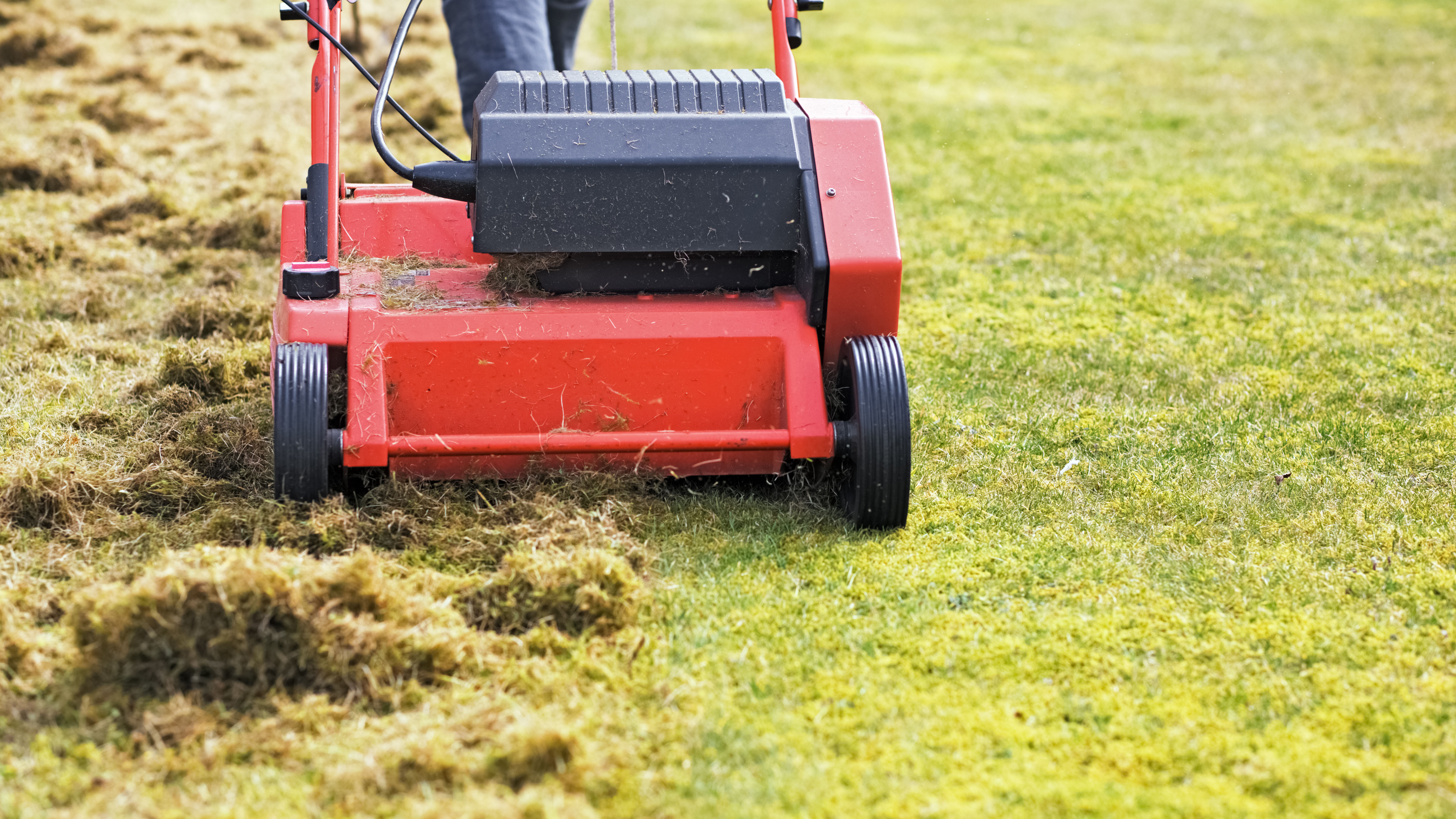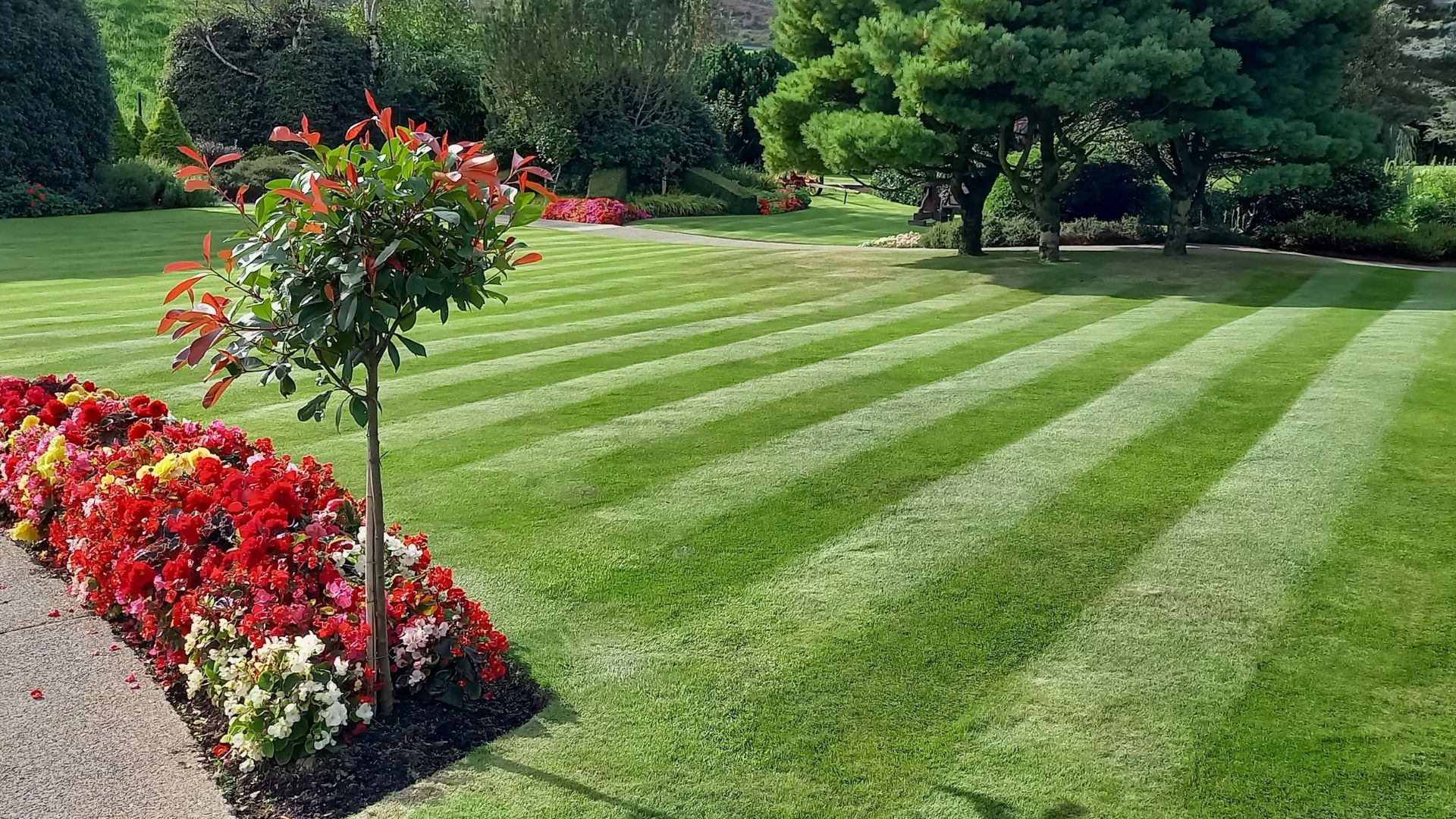
If you have a lawn in your yard, you likely have thatch — even if you’ve never heard of it before. Underneath those beautiful blades of grass, resting on top of the soil, is a layer of organic matter and debris known as thatch. This matter could be made up of grass clippings, leaves, roots, and rhizomes that fall onto the grass and get pushed down to the soil level. Thatch refers to the build up that occurs when the rate of matter decomposition is slower than the rate of accumulation.
Thatch is common and even desired for healthy lawn maintenance, but it can cause problems if it gets too thick. This is because a thin layer of thatch can help to regulate temperature, provide nutrients and conserve water moisture. But a thick layer, measuring over an inch in thickness, prohibits water, air and fertilizer from penetrating the soil and roots. Heat can become trapped in thatch, which hurts the grass stalks and leaves them vulnerable to drought and stress. When you do water, this moisture can also get trapped and create an ideal breeding ground for pests and disease.
This is when dethatching comes in.
What is dethatching?

Dethatching is the process of raking up some of the thatch on your lawn and removing it, so that the thatch level returns to the desired amount (up to 1 inch.) It can be done manually or with a power tool and should occur much less frequently than mowing or fertilizing, yet it has an outsized impact on your lawn health.
Dethatching relies on physically pulling at and dredging up the thatch, which can also remove some grass in the process. We go into detail here about how to dethatch your lawn. As you'd expect, it's important to use the right tools for your lawn and to dethatch sparingly, so that the grass isn’t put under too much stress. Dethatching every 2-3 years can really help keep your grass in good condition.
Dethatching isn’t about removing the entire layer of thatch, but reducing it.
Remember that dethatching isn’t about removing the entire layer of thatch, but reducing it. As some thatch is beneficial, it’s important to gauge the level of thatch present before you take action, so that you can ensure some coverage remains. Use appropriate tools to help you remove the right amount, such as a heavy, short-tined rake with curved blades that will pull up the thatch; a power rake that is set to dig up thatch without destroying the grass; or a vertical mower, which can tackle thicker thatch.
How often should you dethatch your lawn?

Dethatching isn’t something you should expect to do often or even annually. Depending on the kind of grass you have and your local environment, you may never need to dethatch your lawn. However, most people will find that their lawn benefits from dethatching every 1-2 years, especially if your lawn is made up of a naturally fast-spreading grass like Kentucky bluegrass or Bermuda grass. If you grow clumping grasses like tall fescue, you will likely have fewer struggles with thatch.
Another factor will be the kind of soil you have. Lower pH soils are more likely to experience thatch, as are soils that have been excessively treated with nitrogen (which promotes growth). Compacted soils that have poor aeration will also slow down the decomposition of matter, which will promote thatch. If you know that your yard is susceptible to any of these conditions, you will likely need to dethatch more regularly.
Before you dethatch, make sure to check the status of your lawn. This will ensure you don’t dethatch unnecessarily, which will harm your lawn.
Why it's important for lawn maintenance

As mentioned above, thatch is not necessarily bad for your lawn but it must be kept in check. Thatch occurs naturally as a result of accumulating matter on top of the soil and can be useful to help regulate temperature, maintain moisture levels and provide additional nutrients to growing grass. When it is the right thickness, this layer still permits air and water to travel through it and into the soil, but it creates enough of a barrier to stabilize growing conditions. Once this layer gets too thick and dense, often judged to be about 1-2 inches in thickness, the barrier becomes impenetrable and therefore damaging to the grass.
Dethatching therefore allows you to restore the barrier to a thinner profile that helps, rather than hinders, your grass. As the thatch is hidden underneath the grass stalks, it can be hard to identify and impossible to remove without proper dethatching. When done properly, dethatching removes minimal grass along with the thatch, but it can also be a good time to then aerate your lawn and sow more seeds. In combination with other lawn maintenance, dethatching is an important way to keep your grass supplied with the ingredients it needs to flourish.
Signs that your lawn is due for a dethatching

As thatch lies on top of the soil and underneath the grass stalks, it can be impossible to see by eye. However, there are a few easy ways to check if your lawn is in need of dethatching. For one, you may notice a spongy texture underfoot when walking on the lawn; a thicker layer of thatch will create this texture. Another way to check the status of thatch in your garden is to dig up a small area so that you can see a full cross-section of the lawn. You should be able to clearly see the grass stalks, the thatch and then the layer of soil below. If the thatch layer exceeds one inch, it is probably time to remove some of it.
You may also notice that the grass itself is starting to look faded or weak. This may be because a thick thatch layer is preventing the grass roots from getting the moisture and nutrients they need. If you’ve aerated recently and are still seeing this problem, that’s a sign that the problem is thatch. While aeration is important and valuable for lawn maintenance, it works by digging up and removing small cones of soil in their entirety, to provide better circulation. The thatch itself is only removed in those specific locations and therefore will still pose a problem in the rest of your garden. Therefore, if your grass is looking undernourished, dig up a cross section and verify the thatch levels.







